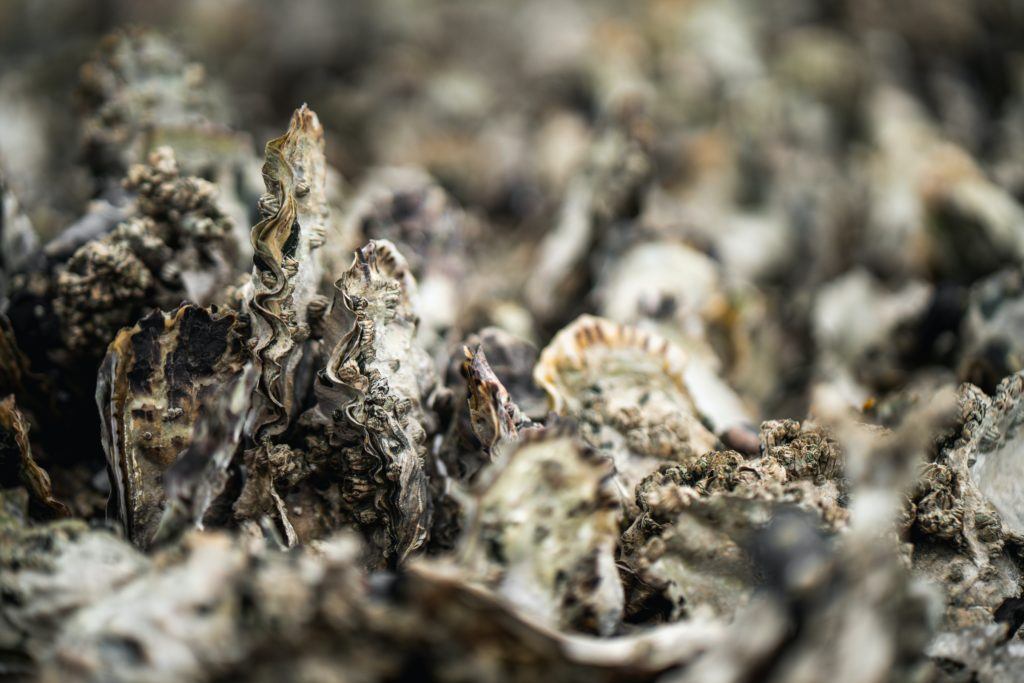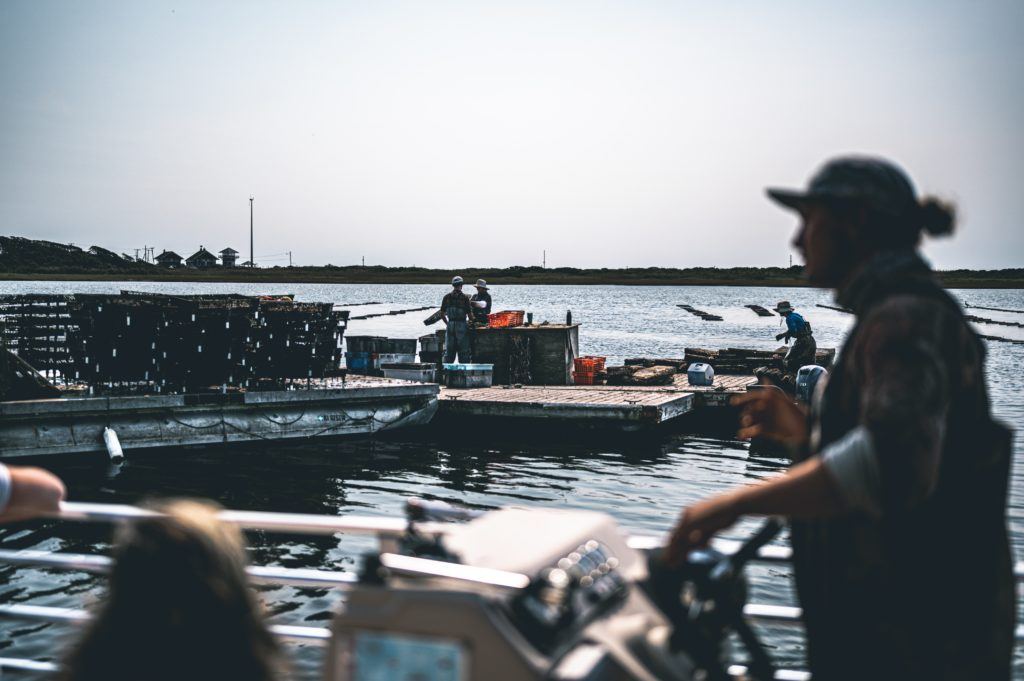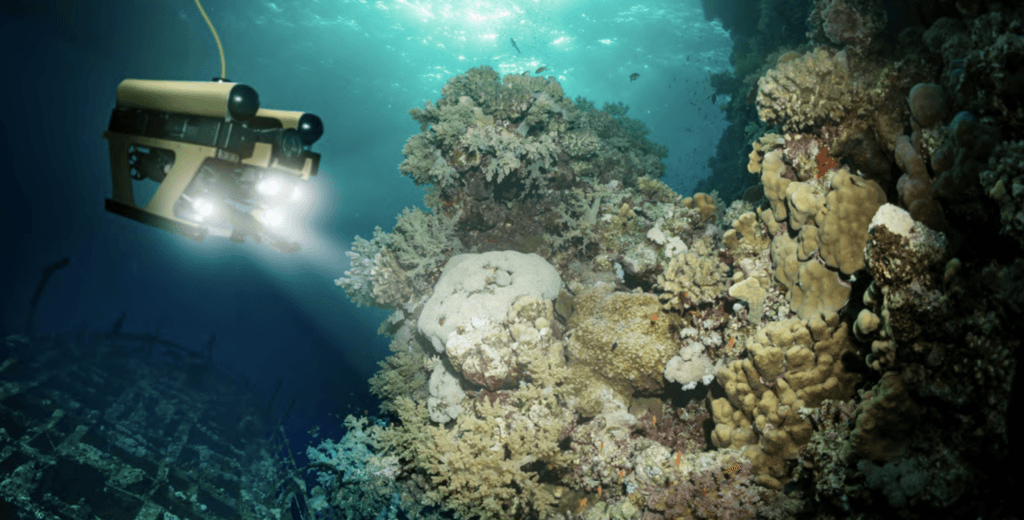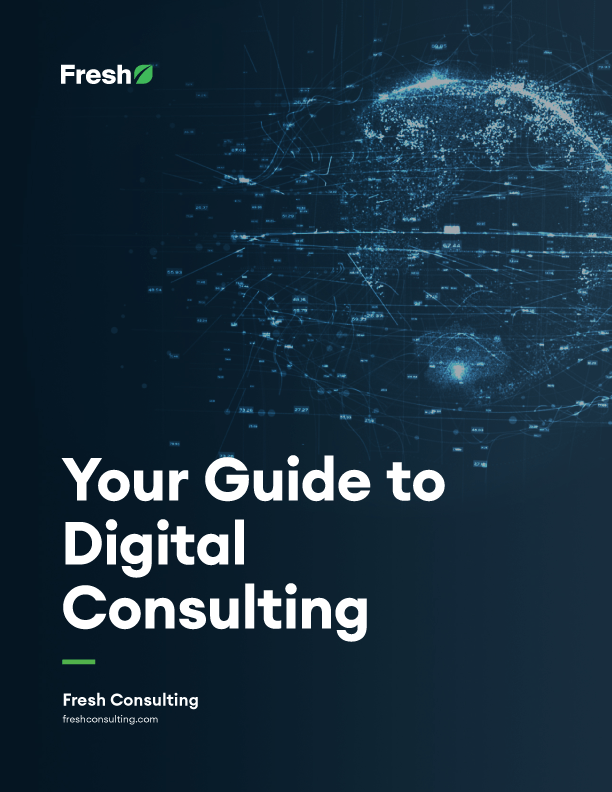Article
Blue Economy Use Cases: Autonomous Oyster Harvesting

Part 1 (The Blue Economy Presents an Ocean of Opportunity)
Part 3 (Six Starting Points for Your Voyage)
***
In our last post on the subject, we provided a general overview of the Blue Economy and what those interested in this burgeoning industry can expect. Now, let’s explore what the Blue Economy can look like in practice.
There are hundreds of possible entry points to the Blue Economy, with enough related content to write an entire book. To illustrate how the Blue Economy requires a multidisciplinary, multi-market, cross-vertical approach, we’ve pulled out the following example.

Dreaming Big: Autonomous Bivalve Farming
In the BBC’s article The simple food that fights climate change, Rachel Lovell quotes Cambridge zoologist David Willer on his thoughts about the importance of championing bivalve farming:
“Bivalves have the remarkable potential to provide people with food that is not only environmentally sustainable but also nutrient dense [ . . . ] We are looking at 340 tonnes of greenhouse gases produced per tonne of edible beef, compared with just 11 tonnes of emissions per tonne of bivalve protein. Those are of course generalised global figures which do not take into account different types of beef production, but it’s not just about the cattle: salmon, one of the most popular fish consumed in developed countries, takes 5kg of wild fish feed for every 1kg of salmon produced.
‘If just 25% of this ‘carnivorous fish’ aquaculture was replaced with an equivalent quantity of protein from bivalve aquaculture, 16.3 million tonnes of CO2 emissions could be saved annually – equivalent to half the annual emissions of New Zealand.’”
Oysters (a type of bivalve) are a great source of protein and can save a massive amount of CO2 emissions preservation annually. So, the sustainability and environmental impact case is sound. But how do we farm all those oysters, and how do we translate that opportunity into business?

Some traditional oyster farming methods include “rope farms” or “purpose-built frames,” which provide a great place to start. But let’s imagine for a moment that Fresh partnered with a client to think outside the box about how to farm oysters using traditional methods while also combining our disciplines of strategy, design, development, and engineering to take things in a new direction. Bivalve farming is time and energy-intensive, and there are unique ways to augment a human workforce.

We might create an oyster-harvesting robot, an AUV, or Autonomous Underwater Vehicle. To bring the AUV to life, we would strategize with oyster farmers about how to be productive and sustainable, design the form and function of the robot itself, create the software, hardware, and firmware that run it, and manufacture and test it before deployment.
A great start––we’ve created the robot. Now we face the challenge of powering it on long missions. In Powering the Blue Economy, the US Department of Energy writes:
“AUVs perform maritime tasks that once took a fleet of ships months to complete, as they can collect data faster and stay at sea longer than traditional vessels. However, power remains a limiting factor, as missions are limited by battery capacity and typically last less than 24 hours.”
Knowing what we do about the universal challenge of charging robots, let’s extract this point and apply it to the example of our hypothetical fleet of oyster harvesting robots. Having developed relationships with ROCOS––“a cloud platform to build and manage your robot operations”—and WiBotic—“reliable charging hardware and fleet energy management software to maximize robot productivity”—we can bring our own expertise as robotics systems integrators to not only design, create, and deploy the robot, but also collaborate with two other companies thinking through cloud-based operations (a challenge when operating something on the ocean floor) and charging for longer missions.

Charging, data collection, and optimization become a part of the solution, creating an even greater opportunity for innovation and continual refinement.
Bottom line, there’s a tremendous opportunity for AUVs and robotics, as applied to the Blue Economy, that touches every aspect of strategy, design, development, and engineering. We wouldn’t be building the first submarine or even recreating the wheel, but with AR/VR systems for control, AI/ML for data collection, IoT for system integration, underwater photogrammetry, and control systems, we can design a better version of a submarine-like vehicle, designed for a specific purpose.
In short, we can take our expertise—which becomes even stronger through partnerships and integration—and send it underwater. The end result? A business-oriented solution to feeding the world and combatting climate change proactively.
As we said in our previous post, the sky is the limit when it comes to the Blue Economy. And a rising tide floats all boats.









